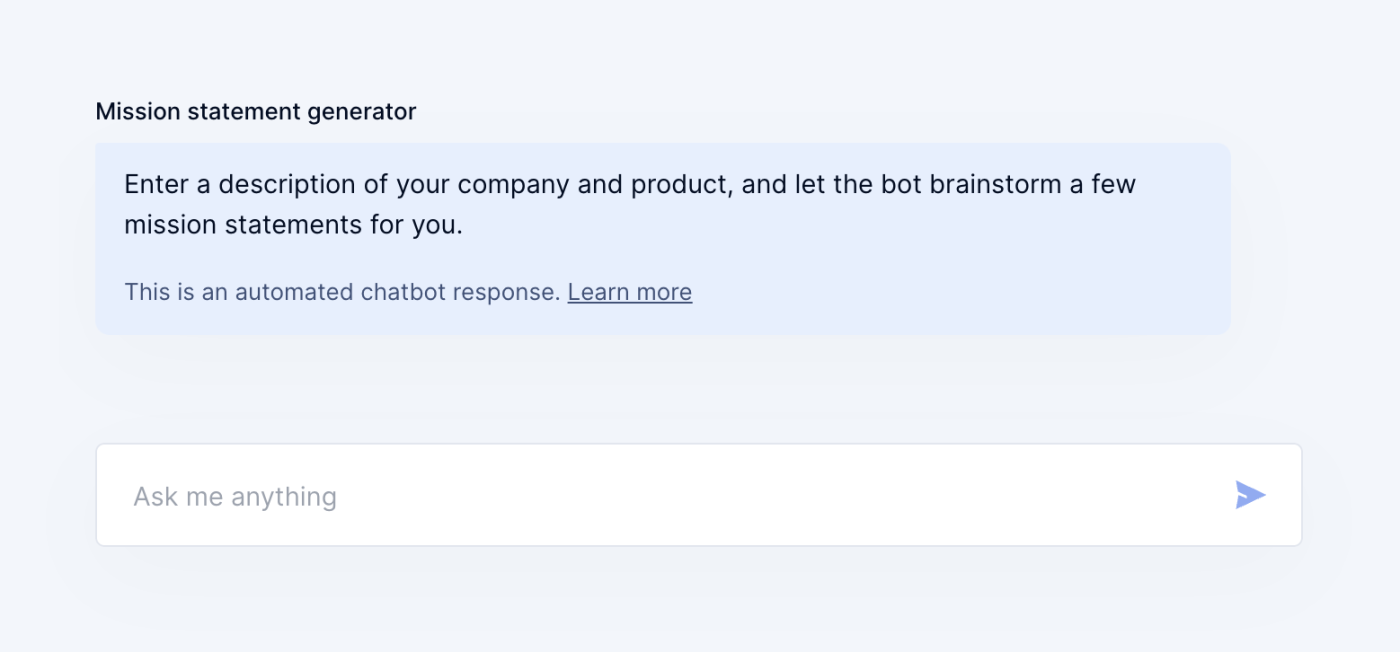When I was job hunting, the first thing I would scope out on a company’s website was its mission statement. Not only would it tell me what the company did, but it would also highlight the company’s values, so I could sniff out any red flags pretty quickly.
But your mission statement isn’t just for attracting talent: your company’s mission statement can be the difference between attracting a large set of loyal customers or people telling their friends to avoid supporting you at all costs.
I’ve compiled a list of great mission statement examples that exhibit an understanding of their target audience—and their own brand. These examples come from companies I’ve loved for a long time and from others I fell in love with from perusing loads of brand pages.
Table of contents:
25 mission statement examples
What is a mission statement?
A mission statement is a short statement that captures the essence of an organization’s existence, including its values and goals. It’s like the superhero origin story of the business world, with fewer radioactive spiders and more buzzwords.
Its purpose is to serve as a guiding principle, providing direction and clarity for your company’s actions and decisions. In just a few sentences, a mission statement answers what you do, why you do it, and who you do it for.
A great mission statement includes the following elements:
-
Clarity and conciseness. Leave jargon for internal meetings. Straightforward language lets stakeholders quickly understand and remember what your company stands for.
-
Acknowledgment of audience challenges. A great mission statement articulates how the organization plans to meet the needs of its customers and employees.
-
Summary of goals, purpose, and values. These key elements unify and align employees toward a common objective and a shared understanding of an organization’s core identity. In this scenario, goals are what you want to accomplish, purpose is why you exist, and values are what you believe in.
-
Distinction from competitors. This is your chance to quickly explain what makes you different and better than your competitors.
Who is a mission statement for?
When creating your mission statement, you should be speaking to the following relevant audiences and their needs:
-
Company leaders. A mission statement is a north star that helps leaders define strategy and make decisions.
-
Employees and contributors. The values and goals outlined will point all your employees in the same direction, giving them core tenets to keep in mind with their work.
-
Potential candidates. You’re conveying the kind of business you are to potential employees, so they know what you stand for and whether or not you have shared values.
-
Customers. Your mission statement expresses what’s unique about your business to prospective customers and tells them why they should buy from you.

Mission statement generator
Remember: Chatbots use AI models, including GPT-3.5 and GPT-4.0. Because AI is a new technology that generates dynamic on-demand responses, we always encourage you to fact-check and verify responses are correct/meet your needs.
All those steps we just gave you? You can also just skip them and have our chatbot (built with Zapier Chatbots) write your mission statement for you. Here’s how it works:
-
Type in a description of your company and product.
-
Click the submit button or hit the Enter/Return key.
After that, the chatbot will output a few mission statement options, each tailored to your business. But don’t expect them to be publication-ready. As with any content generated with AI, you’ll probably want to use these mission statements as starting points or inspiration and let your human brain take you the rest of the way.
How to write a mission statement
How do you possibly encapsulate everything your business does in just 1-2 lines? You can’t. But you can do your best. Here’s how you should go about writing a mission statement, step by step.
-
Connect with stakeholders. Chat with executives, customers, and investors and ask them to explain what your company does in their own words.
-
List out your core values. Write down and define everything your company stands for in one place.
-
Consider your audience. Look through any market research or interviews you have from your target audience to identify their needs that your company exists to meet.
-
Write a rough draft. Take your stakeholder notes, values, and target audience research, and smash them all together in a rough draft. You can also ask ChatGPT, Gemini, or another AI chatbot to help you brainstorm mission statements based on your company, products, core values, and goals.
-
Edit for conciseness. Refine that rough draft into a more succinct statement of what your company does and why, keeping your audience in mind. Ask AI to trim it down if you’re struggling to be brief.
-
Seek feedback. Present your draft to stakeholders, and ask for feedback. This will probably be a long (and potentially painful) process. It might help to include your notes on how you came up with your final product.
-
Revise. Address the edits you receive, keeping your values, goals, purpose, and audience in mind. Don’t lose sight of your research just because Dave from sales thinks it should have more “zing.”
-
Communicate and integrate. Once you have a final product, it’s time to push it out internally and externally and take a nice big sigh of relief.
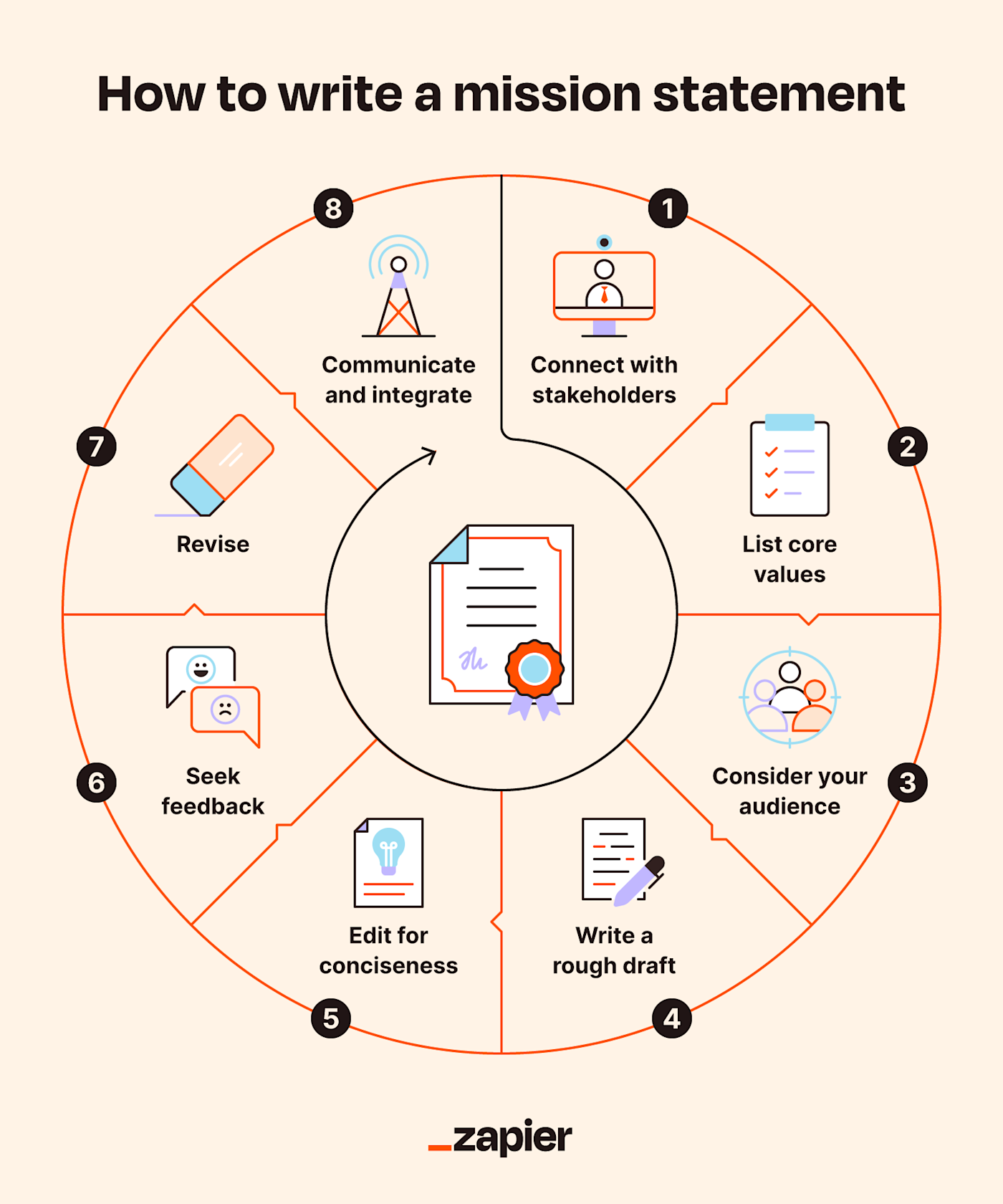
25 mission statement examples done right
For some inspiration before you write your own mission statement, here are some examples from companies doing great things (with great mission statements to guide them).
1. Passionfruit
“To create inclusive clothing and accessories that enable you to show your pride all year round while giving back to our community.”
While some companies only create clothing that celebrates the LGBTQ+ community during Pride Month, Passionfruit makes it a yearlong commitment. It’s also not a company mindlessly slapping rainbows on stuff—this is clothing designed by Queer people for Queer people, which is clear in the mission statement with the simple phrase “our community.”
In one sentence, Passionfruit masterfully conveys its what, why, and who. What? “Create inclusive clothing and accessories.” Why? “To enable you to show your pride all year round and give back.” Who? “Our community.”
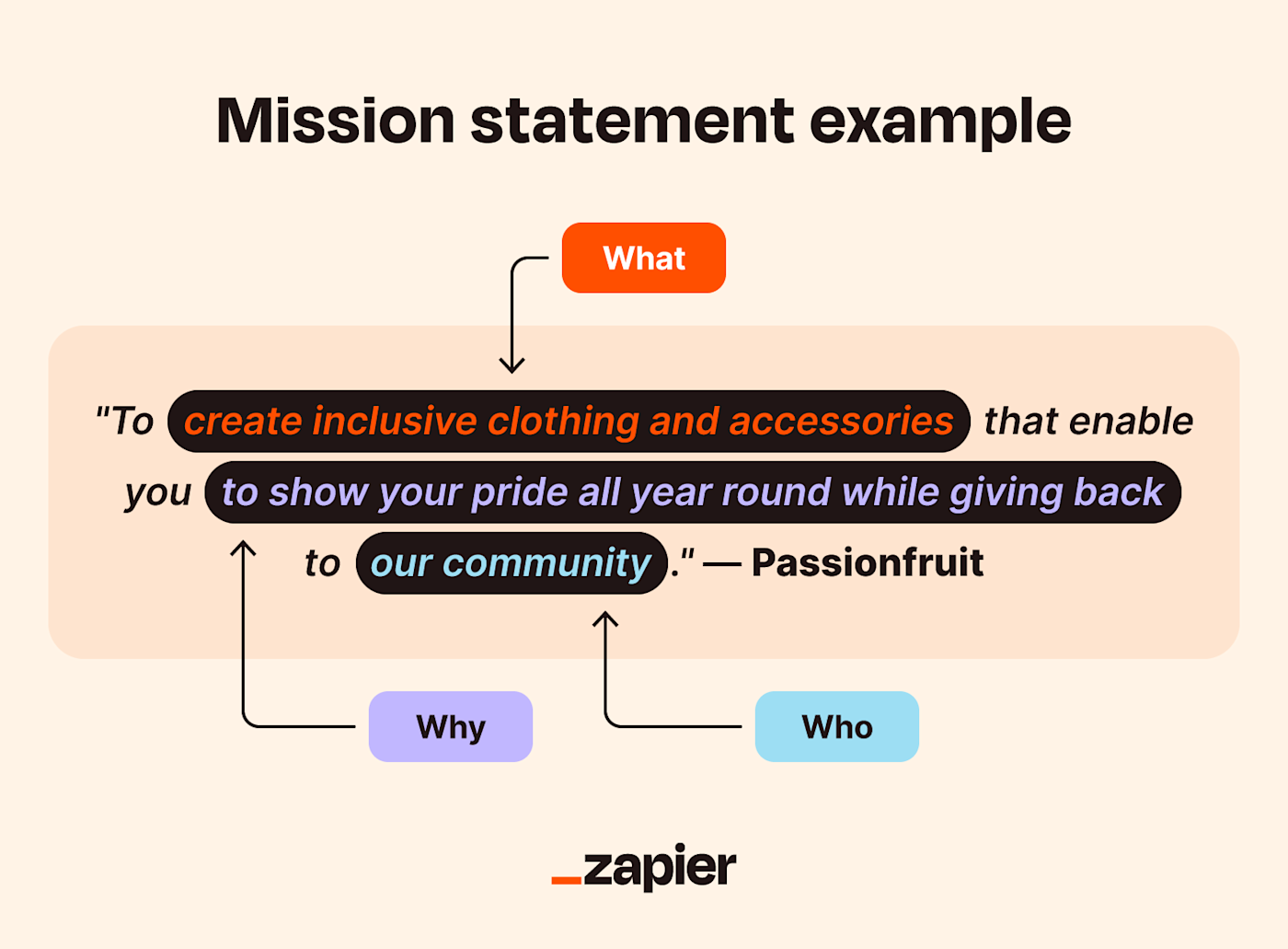
Better yet, “giving back” isn’t just a fluffy marketing phrase. Passionfruit donates a portion of its profits to The Trevor Project, a nonprofit that provides counseling and support to young Queer people.
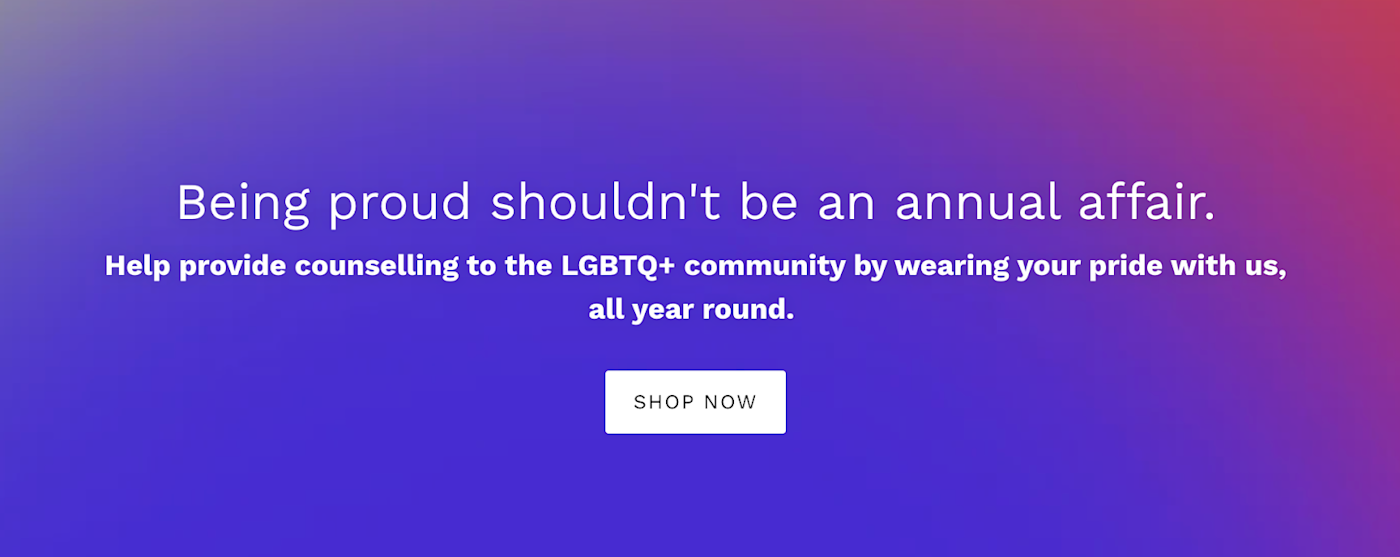
Takeaways:
-
A what, why, who methodology doesn’t have to sound methodical.
-
A mission statement shouldn’t have empty promises—be sure to follow through.
2. Casper
“To awaken the potential of a well-rested world”
Casper’s mission statement is almost as good as their pillows (I own four). By setting out to solve its target audience’s common challenge of getting crappy sleep, Casper immediately connects to the customer in its mission statement.
Even in its action verb choice, “awaken,” it’s clear that this company knows its unique value proposition. The brand could have chosen a generic action verb, but instead, it chose one related to its industry and brand for a greater impact.

Takeaways:
-
Switch out the action verb in your mission statement for something related to your industry to stand out.
-
Incorporate your brand voice for a mission statement that aligns with the rest of your marketing materials.
-
Don’t say more than you need to—you can count the words for this one on two hands.
3. Magic Spoon
“To transform the cereal industry by building a new category of nutritious and flavorful cereal.”
Finding healthy breakfasts that don’t take five hours to meal prep has been one of the biggest cruxes of my adult life. The people at Magic Spoon apparently had the same problem and created healthy cereal options. You’re telling me I can get in some protein and avoid a sugar crash in the afternoon? Sold.
The statement’s biggest strength is its clear and specific language. They could have said, “We make healthy cereal.” But instead, they said they’ve built a “new category of nutritious and flavorful cereal.”
That word choice lets you know that this product didn’t exist before Magic Spoon, and the nutritional value doesn’t compromise the flavor. You get all that from one little sentence.

Takeaways:
-
Clearly define your brand’s niche—the more specific you can get about what you do, the better.
-
Be mindful of your word choice, so you can pack a punch in just one sentence.
4. Dunkin’
“We strive to keep you at your best, and we remain loyal to you, your tastes and your time.”
Dunkin’ keeps its mission statement customer-centric with “you” and “your” language. It gives a personable feel without actually being personalized at all. At the same time, Dunkin’ stays true to its value and brand identity of valuing the customer’s time.
You’ll notice Dunkin’ doesn’t say anything about coffee or donuts. The closest they get to hinting at the products they serve is the verb “tastes.” Because Dunkin’ is a household name brand, it doesn’t need to use precious space in its mission statement explicitly explaining the what of its brand. Instead, Dunkin’ can focus on selling the why and who.

Takeaways:
5. Slack
“Make work life simpler, more pleasant and more productive.”
Other than needing an Oxford comma, Slack’s mission statement hits all the right points. It has a clear purpose, and it uses aspirational language like “simpler,” “more pleasant,” and “more productive,” which makes sense for a workplace audience.
And if you think those three aspirational elements couldn’t possibly encompass an entire company’s goals and values—think again. By recognizing that these elements are interconnected and that improving one aspect can positively impact others, Slack demonstrates a holistic understanding of the complexities of work and, as a result, the complexities of its audience.

Takeaways:
-
A short mission statement doesn’t have to miss any vital information—it should just mean you’re getting to the meat of it quicker.
-
Take the challenges your audience faces and flip them into positive solution words. If “complex systems” is the problem, the word “simplicity” should be in your statement.
6. Caterpillar
“We help our customers build a better, more sustainable world.”
Caterpillar’s mission statement serves as a source of inspiration for its employees while simultaneously demonstrating the value it provides to its customers.
The broad scope works well here because Caterpillar couldn’t possibly list the ways it builds “a better, more sustainable world” in one sentence. Instead, it paints a picture larger than just construction equipment—one that extends to economic, social, and environmental factors. And if you look deeper into the company’s infrastructure and restoration work, you’ll see that this brand is more than machinery.

Takeaways:
-
Focus on your company’s “why,” not just the product you sell.
-
Speak to your customers and your employees in your mission statement, as it guides both groups.
7. Stanley 1913
“We’re built on invention, innovation and inspiration with a timeless spirit that complements your wild imagination.”
Yes, Stanley is more than just the new water bottle trend. And yes, I own two of those 40 oz. handled beauties.
In fact, its mission statement lets you know it’s not just a fad with the callout to “a timeless spirit.” The brand was founded in 1913. This reference implies its products and innovations have stood the test of time and will continue to do so, instilling confidence.
Stanley also establishes itself as complementary to its audience’s needs with the wording, “complements your wild imagination.” Not only does it acknowledge the customer’s aspirations—it also highlights the brand as the enabler of those aspirations.

Takeaways:
-
You can subtly highlight overarching themes of your brand to remind your audience of what sets you apart.
-
Position your brand as your customers’ partner.
8. The Honest Company
“To create safe, effective products for our families and yours.”
The attention to detail is everything in this mission statement. By clarifying its audience is “our families and yours,” The Honest Company establishes a sense of inclusivity and unity, fostering a strong connection between the company and its customers.
The wording of “safe, effective products” also matters in a landscape where safe products don’t always equal effective ones. And when you’re a parent, you need effective ones. This wording shows The Honest Company knows its audience to the core, allowing the organization to speak directly to its customers.
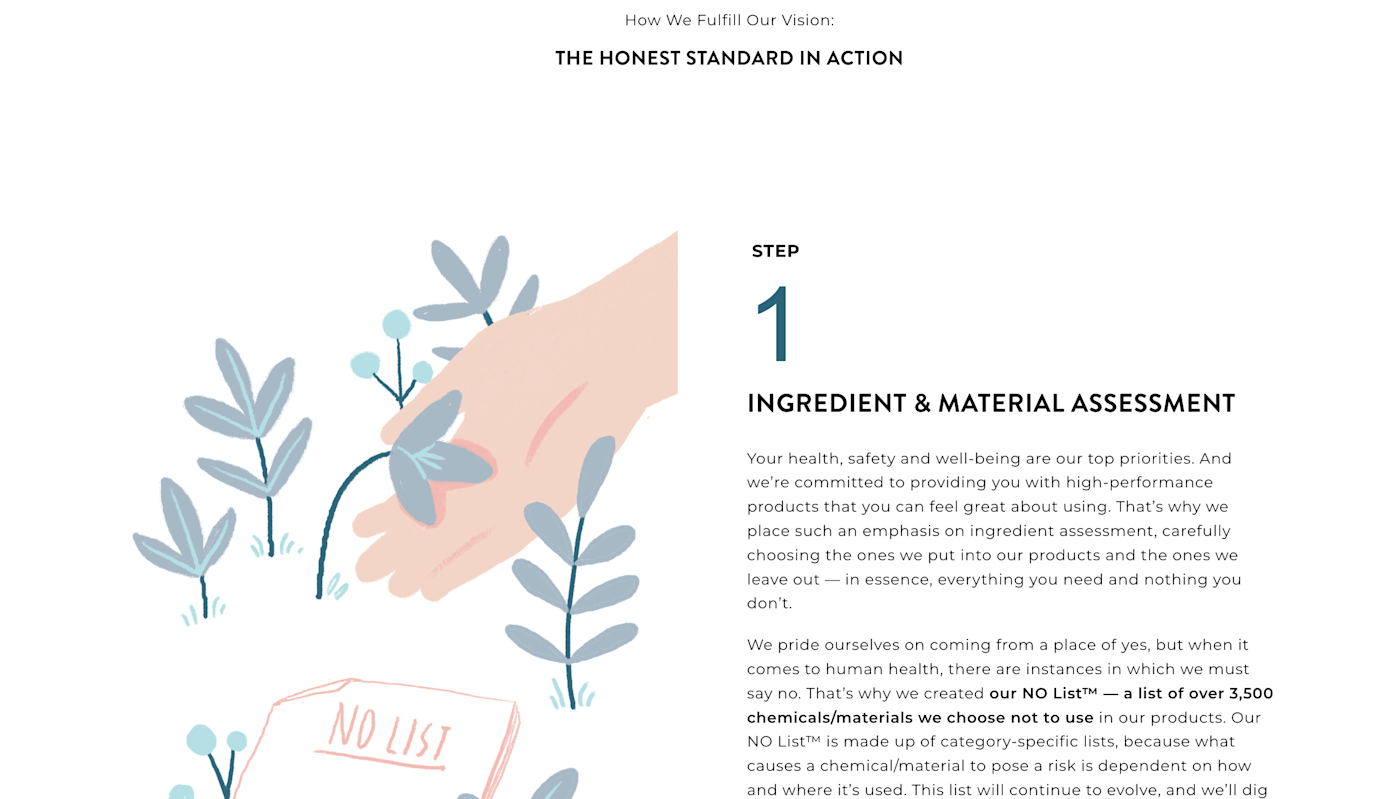
Takeaways:
9. Tula
“To inspire confidence.”
A three-word mission statement can be more effective than you’d think. The straightforward nature of Tula’s mission statement makes it easy to remember and communicate.
It’s also versatile, so it can apply to various aspects of Tula’s business. It encompasses skin care and beauty products that enhance natural beauty but also educational resources that promote self-care and community initiatives. Its broad application makes it inclusive and adaptable to different brand activities.
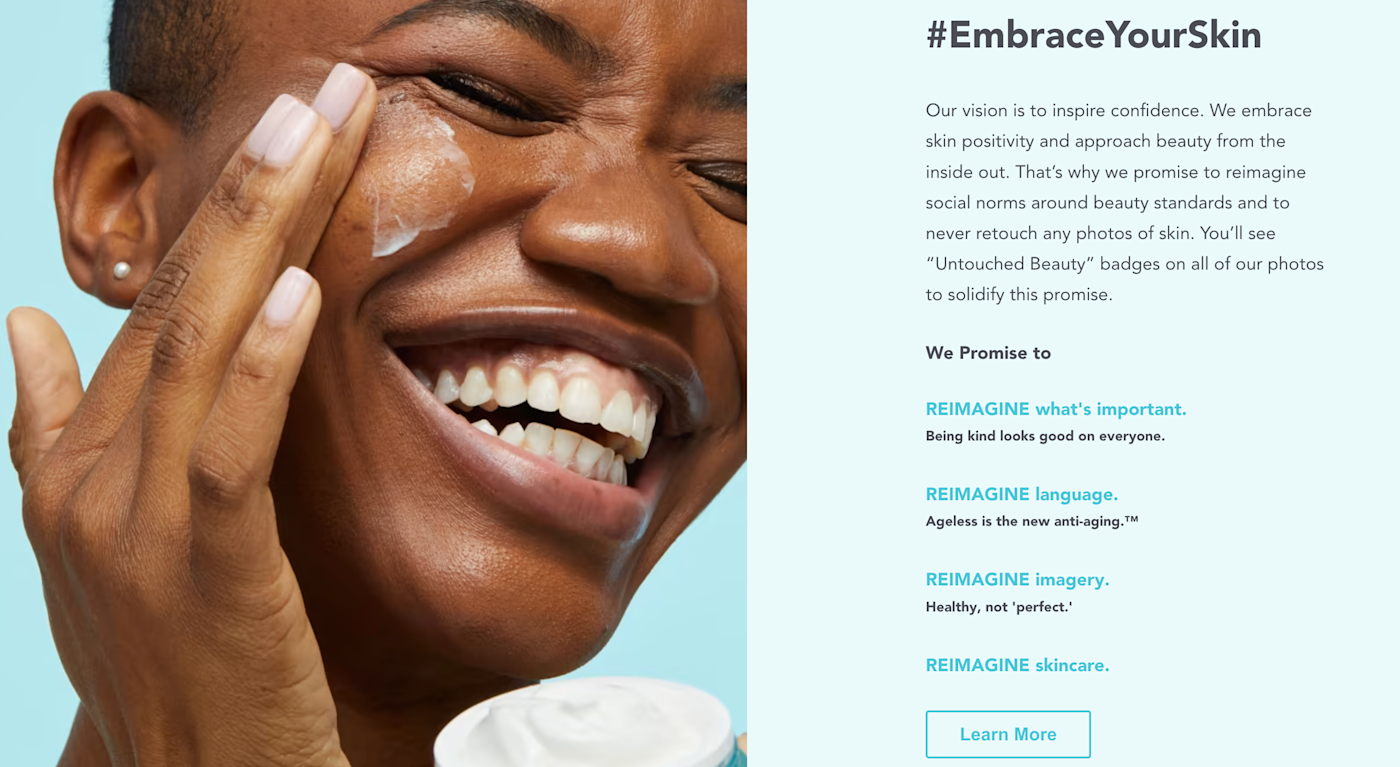
Takeaways:
10. Butterr
“To embrace sustainable motherhood and continue to create timeless, ethically made, intentional products that are free from chemicals and toxic materials.”
Because Butterr only sells a few products, it’s especially important it focuses on the why of what the company does. There are also a lot of baby products on the market, so they need a clear message to cut through the noise and differentiate their brand from the competition.
That’s where Butterr shines—it narrows down its target market to mothers who care about sustainability. The company isn’t trying to appeal to just anyone, so it can get hyper-specific in the mission statement.

Takeaways:
11. Culver’s
“We genuinely care, so every guest who chooses Culver’s leaves happy.”
Culver’s mission statement could be “To make the most delicious fast food burger,” and that would’ve gotten my stamp of approval. But this one works, too.
The emotional appeal here is important, particularly for a company that operates mainly in the Midwest. We like our warm and fuzzies, so phrases like “genuinely care” and “leaves happy” makes Culver’s more akin to Grandma’s house than a fast-food joint.
Plus, Culver’s lays out a pretty clear, measurable goal of ensuring every guest leaves happy. It’s specific but also covers a lot of ground when it comes to customer satisfaction.

Takeaways:
12. Frenshe
“Our goal is to uncomplicate wellness and empower our audience to be their best, authentic selves.”
If there’s a prize for addressing a challenge with the utmost sophistication, this mission statement would win it. Wellness often seems like such an inaccessible thing, from influencers with unrealistic routines to all the expensive products and services associated with the topic.
Frenshe taps into that challenge and faces it head-on with the goal of uncomplicating it. And with products you can purchase at Target and easily integrate into your everyday life, Frenshe lives up to that goal.
Sure, a body wash isn’t going to turn you into a total health guru, but that’s not the point. The brand embraces losing that “all or nothing” mindset and instead focuses on incorporating small acts of self-care to help its customers be their “best, authentic selves.”

Takeaways:
-
If your mission statement isn’t authentic, scrap it.
-
Break down barriers to your niche, so people don’t feel like the product or lifestyle you’re selling is inaccessible.
13. Cora
“We believe everyone should have access to period care—full stop. So, with each Cora purchase, we provide period products and body literacy resources to people who might otherwise go without.”
This is a bold mission statement, but what’s best about it is it doesn’t just state a bold opinion and leave it there. It follows up with exactly how Cora is making a tangible impact and addressing inequity by donating period products and other resources to people who need them.
And in an extremely personal and habitual product space, it takes a bold statement (with the commitment to follow it up) to break through the well-known brand names.
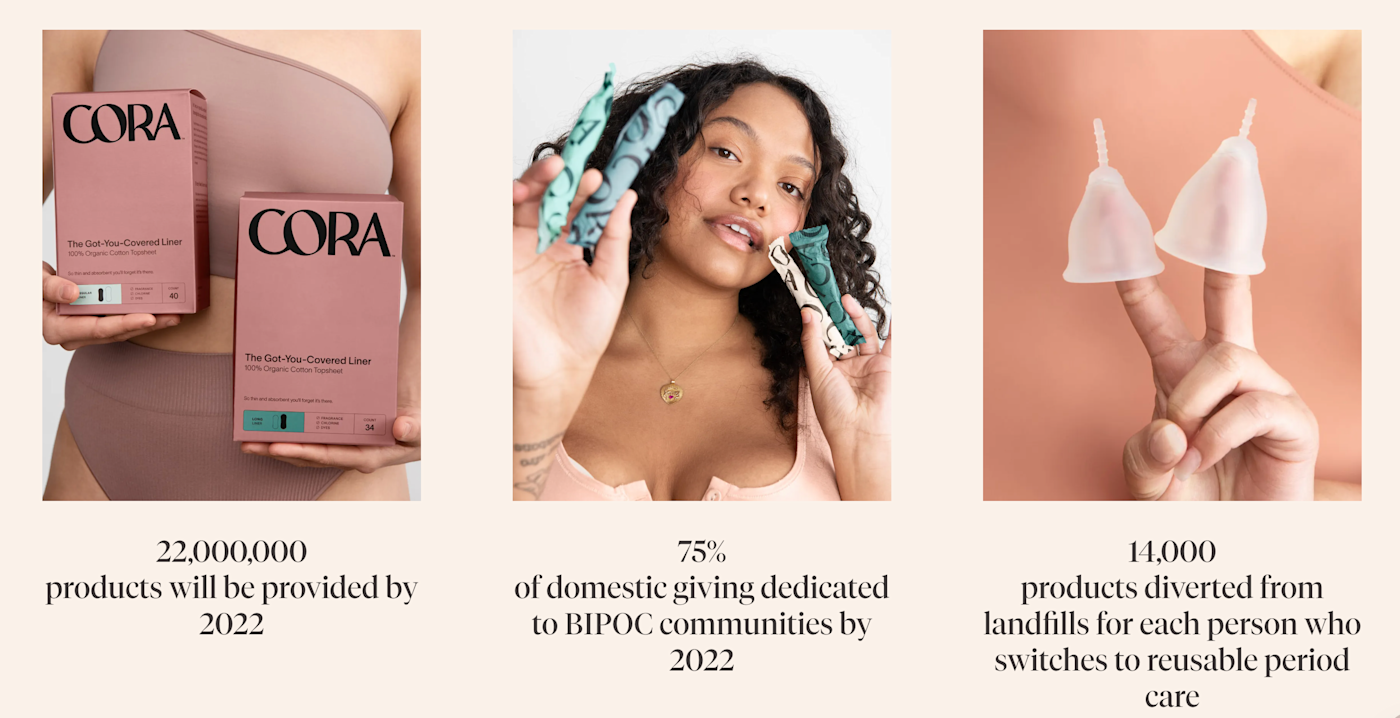
Takeaways:
-
Get loud about what you believe in with your mission statement, but make sure to back it up with what you’re going to do about it.
-
If you’re in a tough-to-break-into industry, it might take a bold statement to get attention.
14. Copper Cow Coffee
“To sustainably support and share the vibrant heritage of Vietnamese coffee.”
Once you try Vietnamese coffee, consider yourself ruined for all other coffee. It’s an especially painful love affair because Vietnamese is hard to find, a struggle that Copper Cow Coffee is solving and acknowledging in its mission statement.
By tapping into the increasing interest in specialty and origin-specific coffee, as well as the growing demand for sustainable and ethically sourced products, Copper Coffee Cow appeals to customers who seek a meaningful and conscious coffee experience.
And it’s not all talk. Copper Coffee Cow works with sustainable and organic farms in Vietnam and pays its farmers two times the market rate.
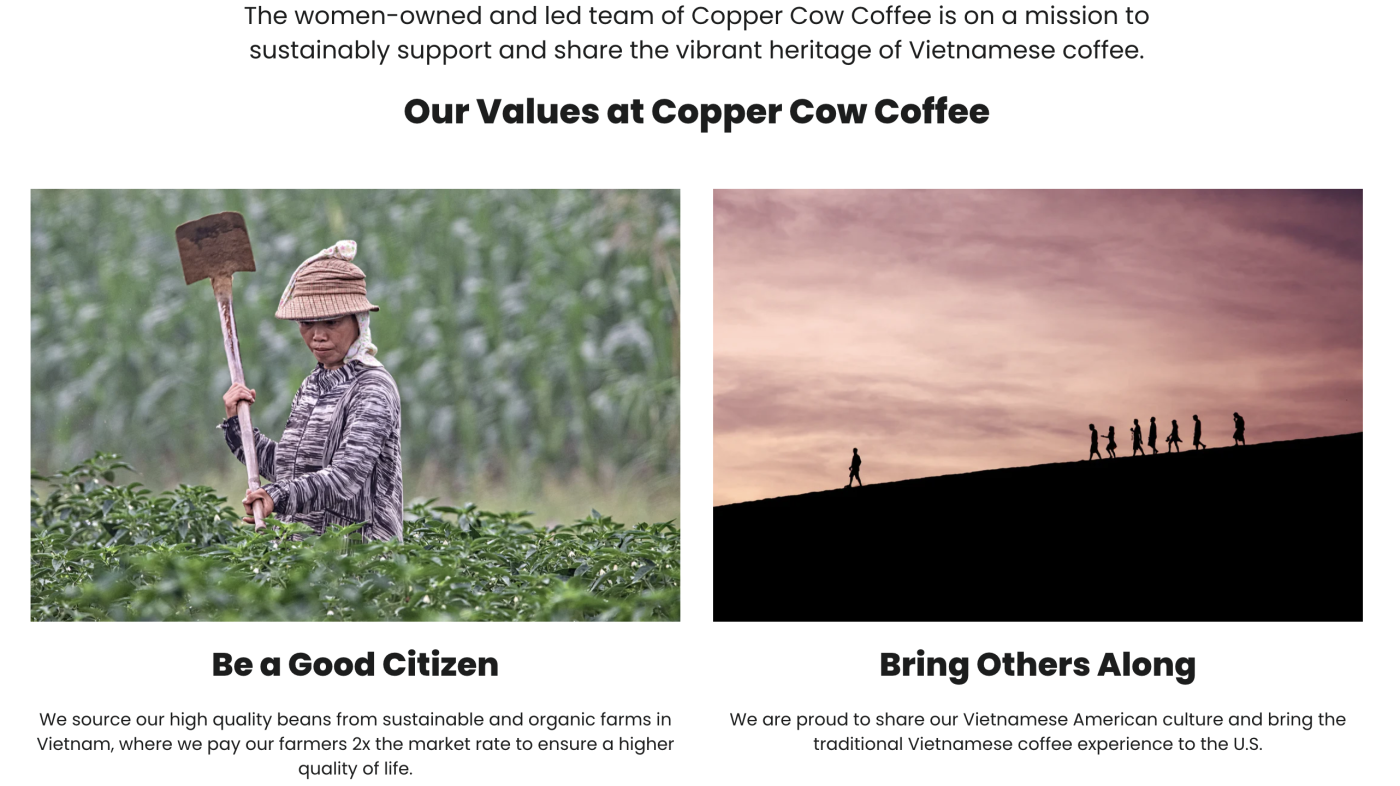
Takeaways:
-
If you’re gonna talk the talk, you better walk the walk.
-
Stay true to your values in your mission statement because they’re also the values of your ideal customer.
15. NAMI
“NAMI provides advocacy, education, support and public awareness so that all individuals and families affected by mental illness can build better lives.”
You may think advocacy, education, support, and public awareness are all pretty similar components, but they each serve a distinct purpose within NAMI. From public policy to education programs, NAMI has a wide sweep of ways they empower individuals with tools and resources.
And not only does the organization support individuals with mental illness, but it also helps affected families. This inclusivity ensures no one is left behind, plus its DEI initiatives back it up.

Takeaways:
-
Call out the pillars of your organization if they serve different purposes.
-
If your brand is inclusive, your mission statement should be too.
16. Bumble
“We encourage integrity, kindness, equality, confidence, and respect during all stages of any relationship — whether online or offline.”
If you know anything about how Whitney Wolfe Herd founded Bumble, you’d know that this mission statement makes total sense. Bumble is different from other dating platforms, and that’s emphasized here.
Where other tech companies might shy away from declarations of kindness and equality, Bumble commits to making its app a safe space. It also perfectly aligns with user needs, especially in an era where online dating horror stories are common party fodder.

Takeaways:
-
Commit to providing what your customer needs.
-
Embrace your differences from the competition.
17. Red Hat
“To be the catalyst in communities of customers, contributors, and partners creating better technology the open source way.”
You know this mission statement is meaningful because one person didn’t just throw it together in an afternoon—over 400 Red Hatters put their heads together to clearly define the software’s role.
And you have to admire the tip of the hat (sorry) to the software’s open source technology reflected both in the wording and the sheer number of contributors to the mission statement.
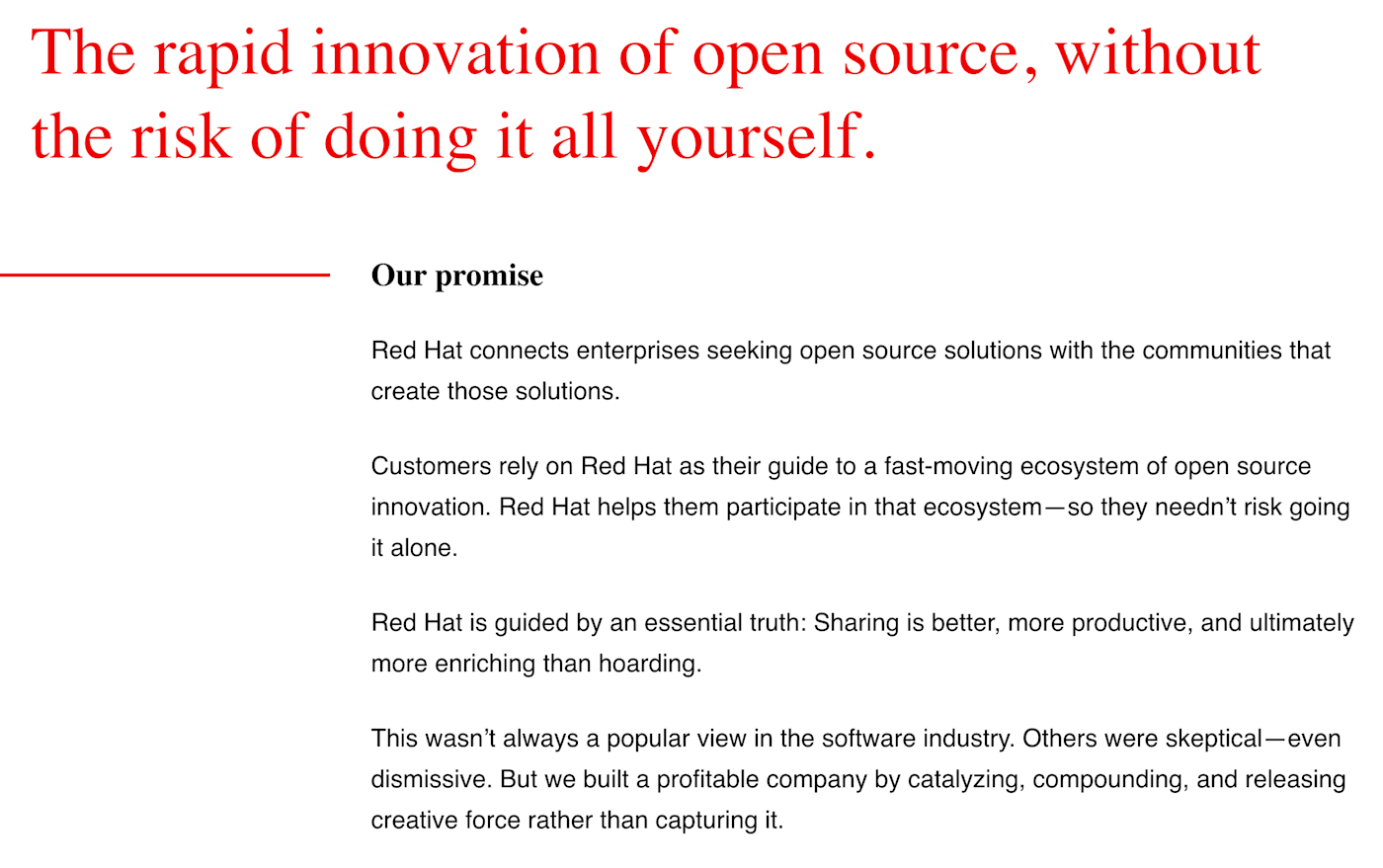
Takeaways:
-
A mission statement benefits from collaboration.
-
Clever nods to what your company does can create a unified, branded experience.
18. Cadence
“To reset people’s expectations of their products.”
You ever spend a ridiculous amount of money on travel-sized products just to have them leak in your bag? Like many other people, I thought that was just how it was. But Cadence challenges that expectation with its product and mission statement.
The company’s magnetic, leakproof travel containers are really cool, but its mission statement expands beyond this one product with a message of innovation and pushing the boundaries of what’s considered normal. Not only does this let the brand grow, but it also disrupts the status quo.

Takeaways:
19. Lasagna Love
“Feed families, spread kindness, and strengthen communities.”
It’s not all about speaking to the customer with mission statements. Sometimes you need to speak to potential volunteers or donors, like Lasagna Love does.
By embodying values like kindness and community building, the mission statement attracts volunteers and donors who align with Lasagna Love’s purpose, leading to a more engaged and supportive network.
It’s also clear and concise by getting straight to the point while still hitting on the values that matter.

Takeaways:
20. Smart Charge America
“To make the entire process of purchasing, installing and servicing your new home charging station as seamless and effortless as possible.”
The process of switching to an electric car is overwhelming. Sure, you can buy an electric car from a dealer, but then what? Smart Charge America answers that question with its business model and mission statement.
Smart Charge America addresses each stage of the home charging station process and assures its customers that they’ll be supported throughout their journey. It puts customers at ease and establishes the brand as a one-stop shop. This branding appeals to the convenience and efficiency the target market is looking for in the space.
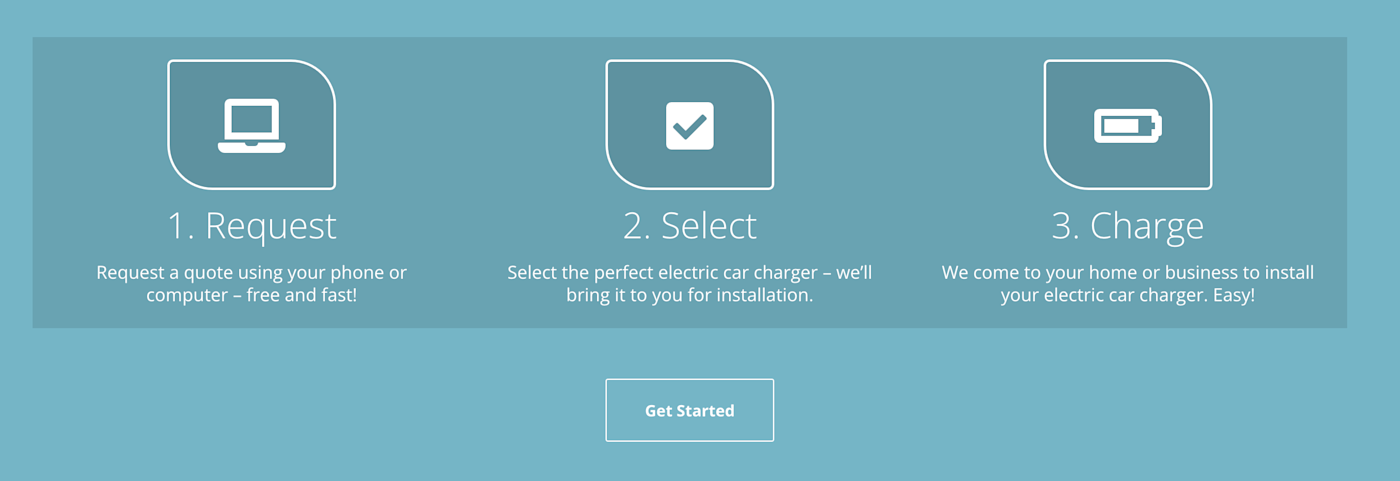
Takeaways:
-
If the buying journey is a stressful one, reassure the customer in your mission statement.
-
You don’t have to explicitly state your values for them to come through.
21. BÉIS
“To give everyone the opportunity to pack up their stuff and hit the road with bags and accessories that wouldn’t break the bank.”
A lot of bags remind me of women’s jeans—where are the pockets? BÉIS’s products are the exception.
Even better, this isn’t a “collect them all” brand. One duffle bag can go from a work bag to a gym bag to a carry-on. Their products are truly designed to be multifunctional, making it super easy to pack your stuff up and hit the road like the mission statement suggests.
And since their products are so versatile and affordable, they stay true to the promise of not breaking the bank either.

Takeaways:
-
Take what’s great about your product and conceptualize it into a lifestyle.
-
If you’re filling a gap in the market, let that be known.
22. Uncle Bobbie’s Coffee & Books
“To provide underserved communities with access to books and a space where everyone feels valued.”
I have a soft spot for bookstores, and this one has a special hold on me with its ability to cultivate a welcoming space in one little mission statement. In combination with the name, this mission statement lets you imagine a place where you can go to gather and belong (in the presence of some good books too).
And with events like author talks and weekly story time, Uncle Bobbie’s Coffee & Books is just that kind of place. Its mission statement also conveys the community impact it makes on underserved communities with the who and how outlined.
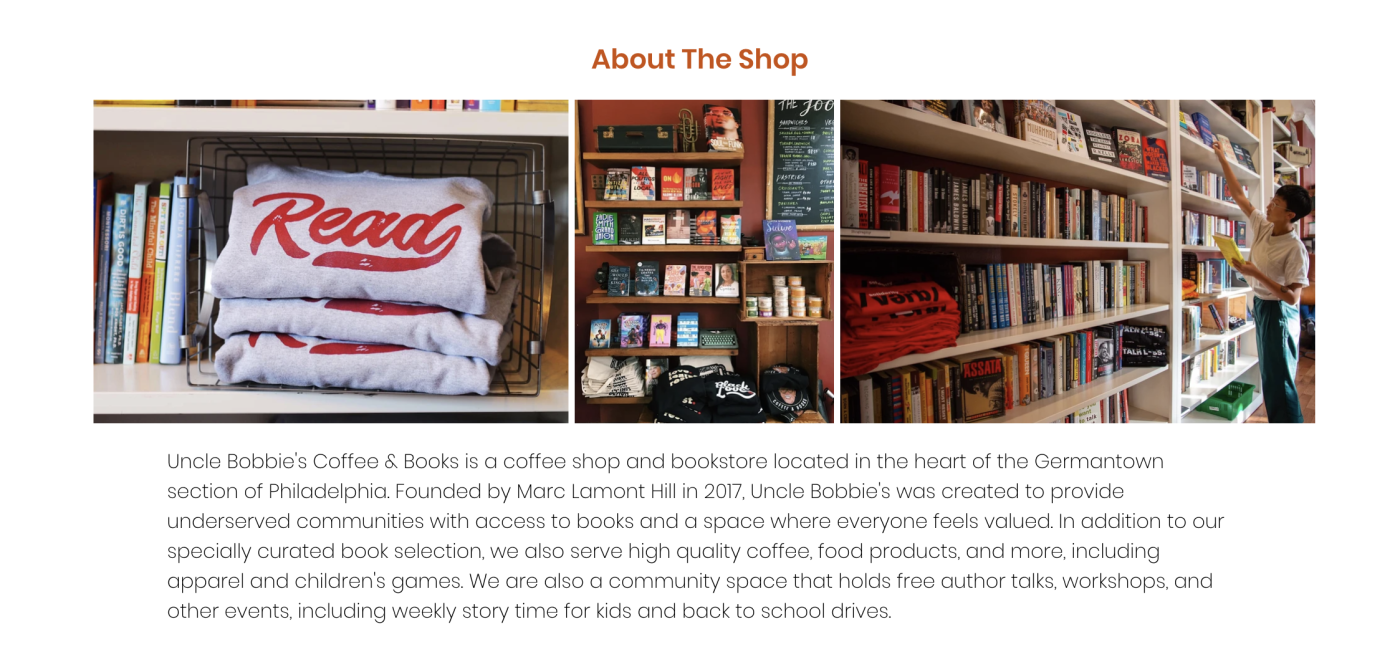
Takeaways:
-
Convey the vibe your business provides for its patrons.
-
If you make a community impact, make it clear who and how you impact.
23. OpenAI
“To ensure that artificial general intelligence benefits all of humanity.”
With all the controversy surrounding artificial intelligence, a mission statement like OpenAI’s is bound to come under a lot of scrutiny—especially since it makes a claim about benefiting literally everyone.
As it stands, many folks argue that OpenAI isn’t quite living up to its mission statement’s promise. They’ve been sued by news publishers for allegedly using copyrighted materials to train their large language model and criticized for a lack of transparency, oversight, and safety.
This doesn’t mean that their products aren’t changing the world or that they won’t better align with their goals in the future. But given that the company has caught a decent amount of heat for not delivering on the expectations they’ve set for themselves, this is an example of the risks associated with big, bold mission statements (even if they sound good on paper).

Takeaways:
24. Rover
“Our mission is to make it easier for people to have pet love in their lives.”
People love their pets, but pet love takes a lot of work. Rover addresses both of these truths in their mission statement, which is short, sweet, and to the point. They aim to make pet care easier—if you’re on board with that goal, then you’re on board with Rover.
Mission statements like this one are great because they don’t just repeat a unique selling point. What Rover does in practice—connecting you with a community of trusted pet sitters and dog walkers—is already clear when you visit their home page. A strong mission statement allows you to express what your company does in principle. Rover’s works because it’s clear, concise, and relatable.

Takeaways:
25. Zapier
“We’re on a mission to make automation work for everyone.”
Zapier’s inclusive language of making automation work for everyone does two things. First, it communicates the belief that automation should be accessible and beneficial for individuals and businesses of all sizes, regardless of technical expertise or resources.
Secondly, it has a scalable impact. By striving for broad adoption and usage, Zapier has the potential to transform entire industries, leveling the playing field and allowing businesses of every shape and size to reap the rewards of automation.
Takeaways:

Mission statement FAQ
Have a few more burning questions about mission statements? Check out these answers to the most common ones.
How long should a mission statement be?
A mission statement should be somewhere around one to three sentences. This ensures it’s concise and focused, making it memorable and impactful.
Why is a mission statement important?
A mission statement is important because it’s a compass for an organization, defining its purpose and values. A well-crafted mission statement communicates your unique value proposition to customers and aligns employees toward a common goal.
What’s the difference between a mission statement and a vision statement?
It’s easy to confuse mission statements and vision statements because they’re both important parts of the strategic planning process for a business, but they serve totally different purposes.
Imagine a mission statement as the foundation of your company, and the vision statement as the blueprint for the rest of the build.
What are the components of a mission statement?
The components of a mission statement include your purpose, values, and target audience. In other words, you want to break down the what, why, and who of your business.
These mission statement examples aren’t the end-all-be-all of how you can craft your own, but they’re a great place to start.
Related reading:
This article was originally published in July 2023. The most recent update, with contributions from Dylan Reber, was in July 2024.
